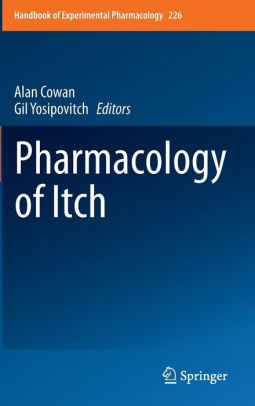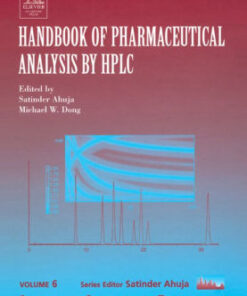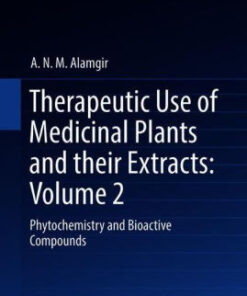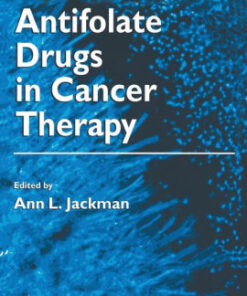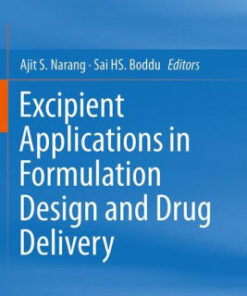(PDF) Pharmacology of Itch By Alan Cowan, Gil Yosipovitch
$28.00
Download instantly Pharmacology of Itch By Alan Cowan, Gil Yosipovitch. It is ebook in PDF format.
ISBN-10: 3662446049 ISBN-13: 9783662446041
Preview
This is the PDF eBook version for Pharmacology of Itch By Alan Cowan, Gil Yosipovitch
Table of Contents
Preface
References
Contents
Historical Background of Itch
1 Introduction
2 Starting from Scratch: A Note on Terminology
3 Medical Histories: Ancient Descriptions of Itch
4 The Byzantine Period
5 Medieval Medicine
6 From Paracelsus to Plenck
7 Scratching the Surface: Classification
8 An Itch for Science
9 Modern Cures
10 Itching for Revolution
References
Pruritus Epidemiology and Quality of Life
1 Definition and Classification of Pruritus
2 Epidemiology of Pruritus
2.1 Chronic Pruritus in the General Population
2.1.1 Predictors of the Incidence of Itch
2.2 Disease-Specific Epidemiology of Chronic Pruritus
2.2.1 Dermatologic Disease
2.2.2 Systemic Diseases
2.2.3 Renal Disease
2.2.4 Hepatic Disease
2.2.5 Hematologic Disease
2.2.6 Neoplasms
2.2.7 Other Diseases
2.2.8 Pharmacologic
2.3 Considerations of Epidemiologic Estimates of Pruritus
3 Impact of Chronic Pruritus on Quality of Life
3.1 Instruments to Measure the Impact of Pruritus on QoL
3.2 Quantifying the QoL Impact of Pruritus in General Population Studies
3.2.1 Predictors of Pruritus QoL Impact in General Population Studies
3.3 Disease-Specific Impact of Chronic Pruritus on Quality of Life
3.3.1 Dermatoses
Atopic Dermatitis
Psoriasis
Chronic Urticaria
Vitiligo
3.3.2 Extracutaneous Disease
Systemic Sclerosis
Chronic Venous Insufficiency
End-Stage Renal Disease
Chemical Exposure
4 Conclusion
References
Neurophysiology and Itch Pathways
1 Teleological Implications of Itch
2 Peripheral Pathways for Itch
2.1 Electrophysiologically Classified Functional Groups of Primary Afferents in Primates
2.2 Structural Markers for Classification of Primary Afferents
2.3 Spatial Specificity for Itch?
3 Spinal Processing of Itch
4 Interactions Between Itch Pathways with Painful and Non-painful Stimuli
5 Sensitization to Itch
6 Perspectives
References
Neuroimaging of Itch as a Tool of Assessment of Chronic Itch and Its Management
1 Introduction
2 Itch Transmission to the Superior Centers of the Central Nervous System
3 Itch Transmission from the Thalamus to the Cortex
4 Cortical Regions that Are Important During Itch Processing
5 Prefrontal and Limbic Control
6 Differential Cerebral Processing of Histamine and Cowhage Itches
7 Brain Processing of Chronic Itch
8 Craving for Itch Relief and Its Cerebral Mechanisms
9 Role of the PAG in Itch Inhibition
10 Modulation of Itch Targeting the Brain
11 Contagious Itch
12 Future Directions
References
The Role of the Mrgpr Receptor Family in Itch
1 Introduction
2 Identification of the Mrgpr Family of Receptors
3 Ligands and Agonists
4 Mrgprs as Itch Receptors
4.1 MrgprA3
4.2 MrgprC11
4.3 MrgprD
5 Mrgprs as Molecular Markers of Itch-Mediating Neurons
5.1 MrgprA3-Positive Neurons
5.2 MrgprD-Positive Neurons
5.3 The Role of Mrgprs-Positive Neurons in Chronic Itch
6 Future Direction
References
Transient Receptor Potential Channels and Itch: How Deep Should We Scratch?
1 Transient Receptor Potential Channels and Itch: Introduction
2 The Neural Organization of the Pruriceptive System
2.1 Pruriceptive Sensory Fibers in the Skin
2.2 Spinal Itch Processing
2.3 Higher Itch Centers
3 Pruritus: Types and Mediators
3.1 Histamine
3.2 Proteases and Their Receptors
3.3 Neuropeptides and Neurotrophins
3.4 Inflammatory Mediators as Peripheral Itch Sensitizers
4 The “Pruritic´´ TRP Channels
4.1 The Vanilloid (Capsaicin) Receptor TRPV1
4.2 TRPV2
4.3 TRPV3 and TRPV4
4.4 TRPA1
4.5 TRPM4
4.6 TRPM6 and TRPM7
4.7 TRPM8
4.8 Canonical TRP Channels
5 Targeting TRP Channels for Itch Relief: The Promise and the Challenges
References
Itch Control by Toll-Like Receptors
1 Introduction to Toll-Like Receptors
1.1 Structure
1.2 Ligands
1.3 Signaling Pathways
2 Introduction to Itch
3 Control of Itch by Peripheral TLRs
4 Control of Itch by Central TLRs
5 Clinical Significance and Future Perspectives
References
Transmission of Pruriceptive Signals
1 Transmission of Itch Signals from Primary Itch-Receptor Neurons
2 Excitatory Neurotransmission in the Spinal Cord
3 Inhibitory Transmission in the Spinal Cord
4 Concluding Remarks
References
Role of Cytokines and Chemokines in Itch
1 Introduction
2 IL-31
2.1 Evidence for the Role of IL-31 in Itch
2.2 Mechanism of IL-31-Induced Itch
3 Oncostatin M
4 TSLP
5 IL-4 and IL-13
6 Interleukin-6
7 Interleukin-2
8 Interleukin-8
9 TNF Alpha
10 Other Cytokines
11 Conclusions
References
Interactions Between Keratinocytes and Somatosensory Neurons in Itch
1 Introduction
2 The Skin and the Detection of Itch Stimuli
3 Keratinocyte-Mediated Modulation of Pruriceptors
4 Indirect Interactions Between Keratinocytes and Sensory Neurons
5 Direct Interactions Between Keratinocytes and Sensory Neurons
6 Neuronal Modulation of Keratinocytes
7 Keratinocytes and Chronic Itch
References
Itch and Its Inhibition by Counter Stimuli
1 Introduction
2 Transcription Factors and the Development of the Dorsal Spinal Cord
3 Mice Lacking the Transcription Factor Bhlhb5 Show Abnormally Elevated Itch
4 Pathological Itch in Bhlhb5-/- Mice Is Due to the Loss of B5-I Neurons
5 B5-I Neurons Function to Inhibit Itch
6 B5-I Neurons Release the Kappa Opioid Dynorphin and Kappa Agonists Inhibit Itch
7 Kappa Agonists as a Therapeutic Agent for Chronic Pruritus
7.1 Kappa Agonists Are Selective for Itch
8 Increasing Evidence That Opioid Receptor Subtypes Show Modality Selectivity
9 Inhibition of Itch by Counter Stimuli
10 Conclusions
References
Noradrenergic Modulation of Itch Transmission in the Spinal Cord
1 Pharmacological Significance of Itch Regulation in the Dorsal Horn
2 Central Regulation of Itch Sensation
2.1 Counterirritants
2.2 Distraction
3 Noradrenergic Inhibition of Itch Transmission
3.1 Descending Noradrenergic System
3.2 a1-Adrenoceptors
3.3 a2-Adrenoceptors
4 Systemic Pharmacological Agents
4.1 a-Adrenoceptor Agonists
4.2 Noradrenaline Reuptake Inhibitors
4.3 Other Potential Drugs
References
Protease-Activated Receptors and Itch
1 Protease-Activated Receptors and Itch
2 Mechanisms of Protease-Activated Receptor-Mediated Itch
3 Itch Sensitization via Protease-Activated Receptors
4 Protease-Activated Receptors and Pain
5 Protease-Activated Receptors as Target Molecules for Future Treatments of Chronic Itch
References
NK-1 Antagonists and Itch
1 Substance P and Neurokinin Receptors
1.1 Cutaneous Transmission of Itch
1.2 The Tachykinin Family
1.3 Biological Role of SP and NK1R in the Skin
1.4 Role of SP in Pruritus
2 Neurokinin Receptor Antagonist, Aprepitant
2.1 Adverse Events with Aprepitant
3 Antipruritic Effects of Aprepitant
3.1 Acute Pruritus (Table3)
3.2 Chronic Pruritus (Table4)
References
Antihistamines and Itch
1 Introduction
2 Histamine and Itch
3 The Histamine H1 Receptor
4 The Histamine H2 Receptor
5 The Histamine H3 Receptor
6 The Histamine H4 Receptor
7 Conclusions and Future Directions
References
Targeting Itch with Ligands Selective for kappa Opioid Receptors
1 Introduction
2 Kappa Receptors and Itch/Scratch: Background
3 Compound 48/80-Induced Scratching in Mice
4 Pruritogenic Activity of norBNI in Mice
5 Pruritogenic Activity of 5-GNTI in Mice
6 Behavioral Effects of Zyklophin in Mice
7 Antipruritic Profile of Nalfurafine (TRK-820)
8 Butorphanol and Nalbuphine as Antipruritics
9 Potential of Peripherally Directed Kappa Agonists
10 Perspectives
References
Neuraxial Opioid-Induced Itch and Its Pharmacological Antagonism
1 Neuraxial Opioids
1.1 Clinical Applications of Neuraxial Opioids
1.2 Side Effects of Neuraxial Opioids
2 Mechanisms of Neuraxial Opioid-Induced Itch
2.1 The Molecular Basis
2.2 The Cellular Basis
2.3 Animal Models with Translational Values
3 Pharmacological Antagonism by Opioid-Related Ligands
3.1 Mu Opioid Receptor Antagonists
3.2 Opioid Receptor Partial Agonists
3.3 Kappa Opioid Receptor Agonists
4 Pharmacological Antagonism by Non-Opioid Ligands
4.1 Serotonin 5-HT3 Receptor Antagonists
4.2 Histamine H1 Receptor Antagonists
4.3 Nonsteroidal Anti-Inflammatory Drugs
5 Conclusion
References
Current Topical and Systemic Therapies for Itch
1 Introduction
2 Topical Treatments
2.1 Emollients
2.2 Oatmeal Moisturisers
2.3 Menthol
2.4 Calamine
2.5 Topical Anaesthetics
2.6 Capsaicin
2.7 Topical Glucocorticoids
2.8 Topical Calcineurin Inhibitors
2.9 Topical Antihistamines
2.10 Topical Cannabinoids
2.11 Topical Prostanoid Inhibitors
2.12 Miscellaneous Ion Channel Blockers
3 Systemic Treatments
3.1 Systemic Antihistamines
3.2 Glucocorticosteroids
4 Drugs That Work on Central Mechanisms of Itch
4.1 Gabapentin
4.2 Antidepressants
4.3 Mu-Opioid Antagonists
4.4 Kappa-Opioid Agonists
4.5 Neurokinin-1 Inhibitors
4.6 Thalidomide
5 Immunosuppressants for Chronic Itch
6 Phototherapy
7 Conclusion
References
Atopic Itch in Dogs: Pharmacology and Modeling
1 Etiology of Itch in Dogs
2 Pharmacology of Itch in Dogs
2.1 Glucocorticoids for Canine Atopic Itch
2.1.1 Mechanism of Action of Glucocorticoids in Canine Atopic Itch
2.1.2 Efficacy of Glucocorticoids for Canine Atopic Itch
Oral Glucocorticoids
Topical Glucocorticoids
2.2 Cyclosporine for Canine Atopic Itch
2.2.1 Mechanism of Action of Cyclosporine for Canine Atopic Itch
2.2.2 Efficacy of Cyclosporine for Canine Atopic Itch
2.3 Type 1 Antihistamines for Canine Atopic Itch
2.3.1 Mechanism of Action of Type 1 Antihistamines for Canine Atopic Itch
2.3.2 Efficacy of Type 1 Antihistamines for Canine Atopic Itch
2.4 Janus Kinase (JAK) Inhibitors
2.4.1 Mechanism of Action of JAK Inhibitors for Canine Atopic Itch
2.4.2 Efficacy of JAK Inhibitors for Canine Atopic Itch
3 Modeling Canine Atopic Itch
3.1 Pruritus Induction by Single Substances
3.2 Flea Allergic Pruritus Dog Model
3.3 House Dust Mite Allergic Pruritus Dog Model
References
